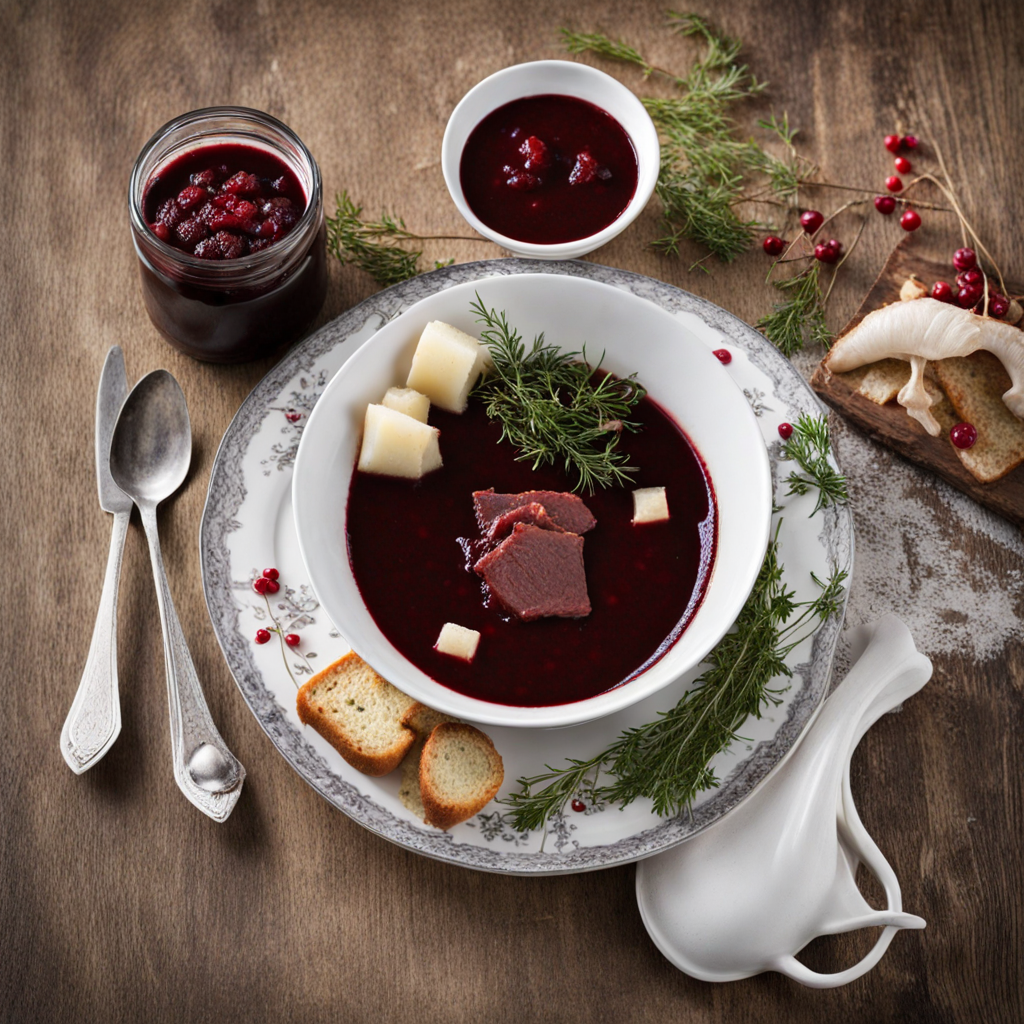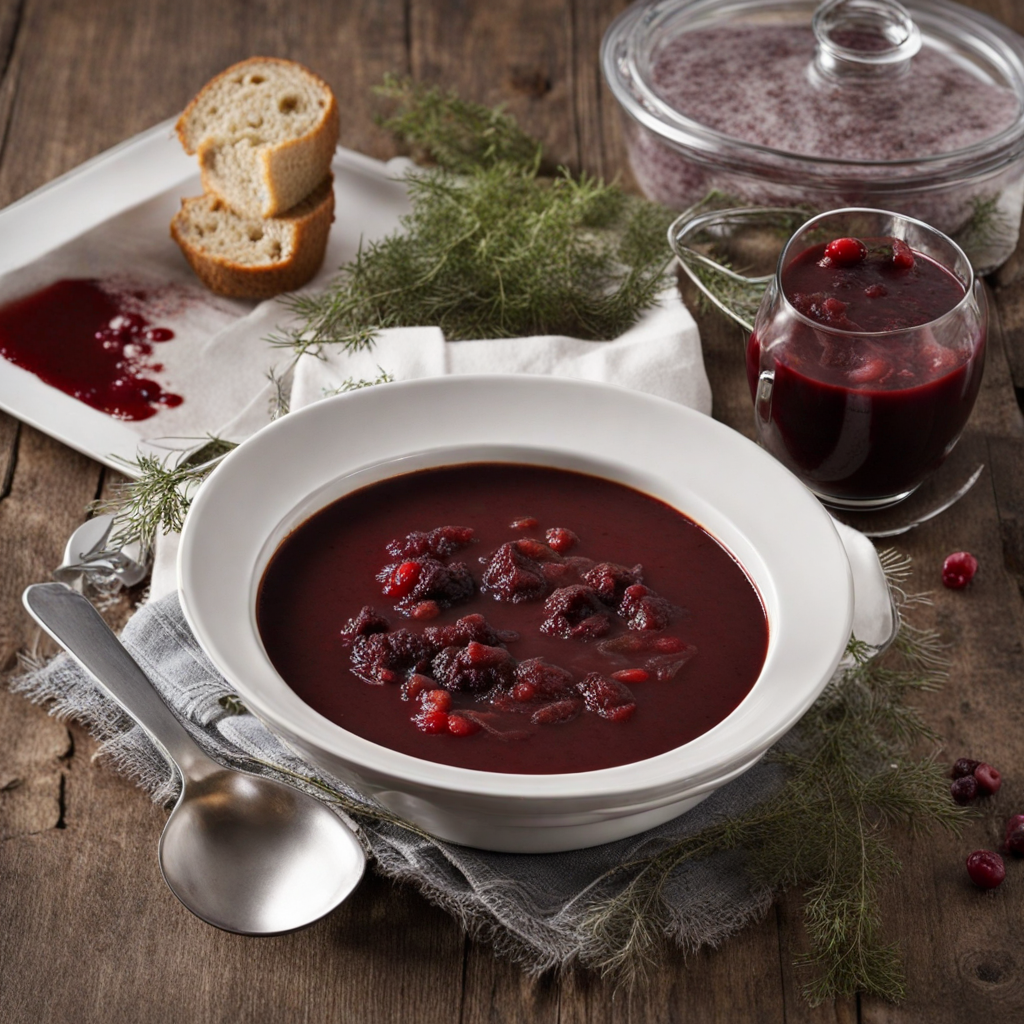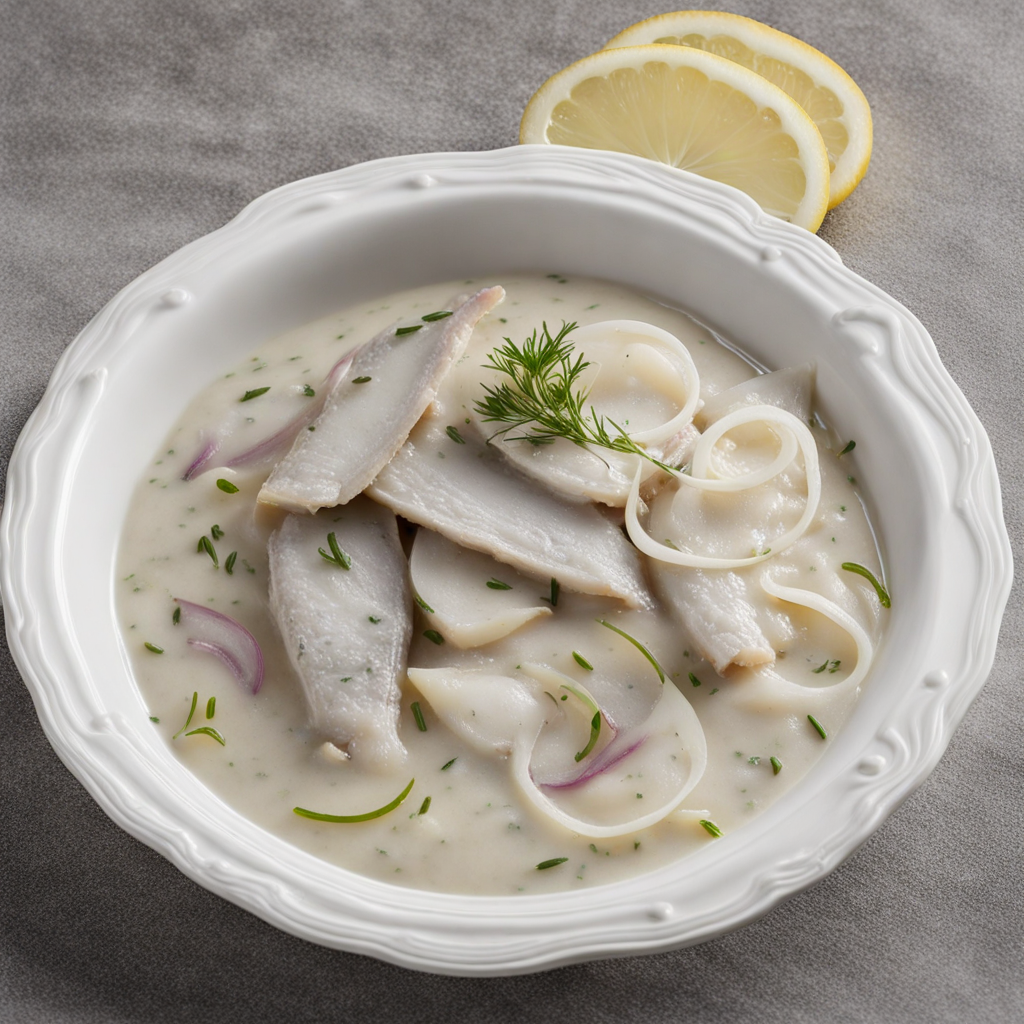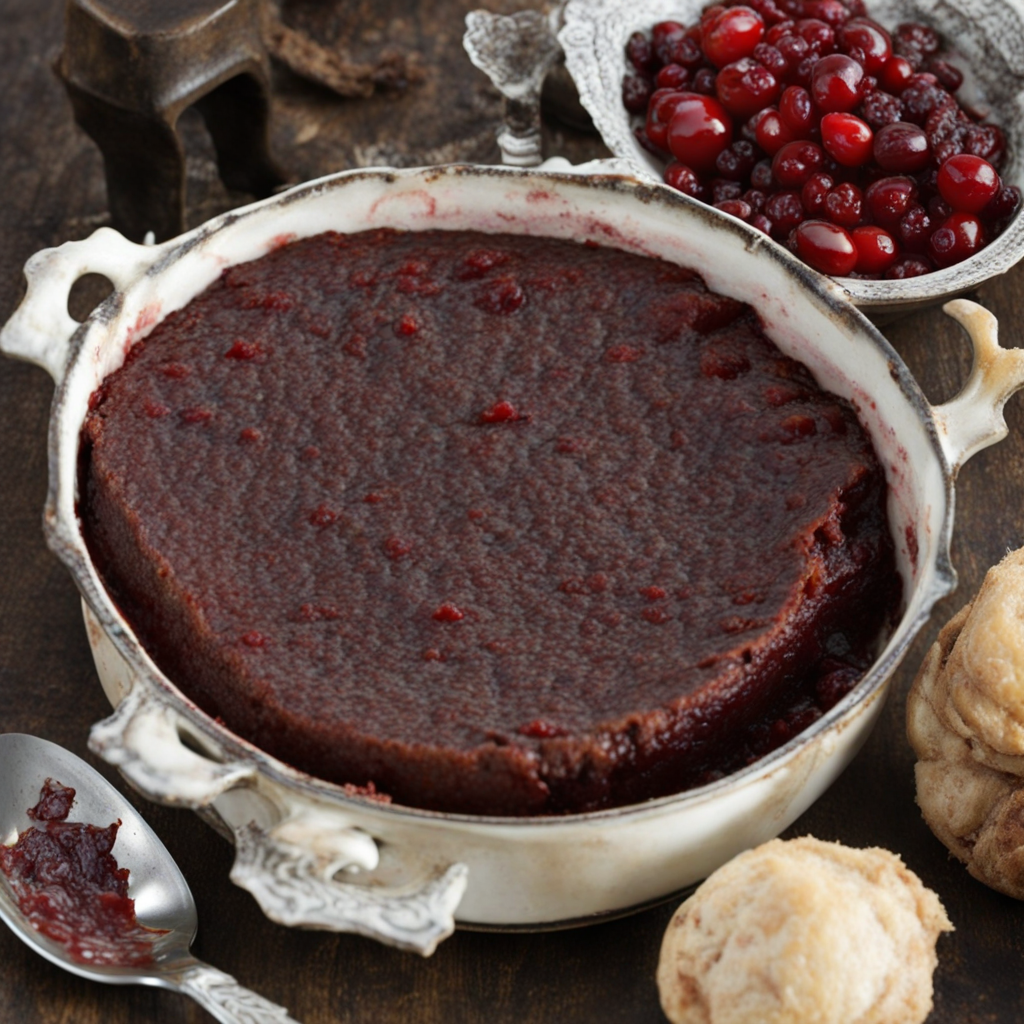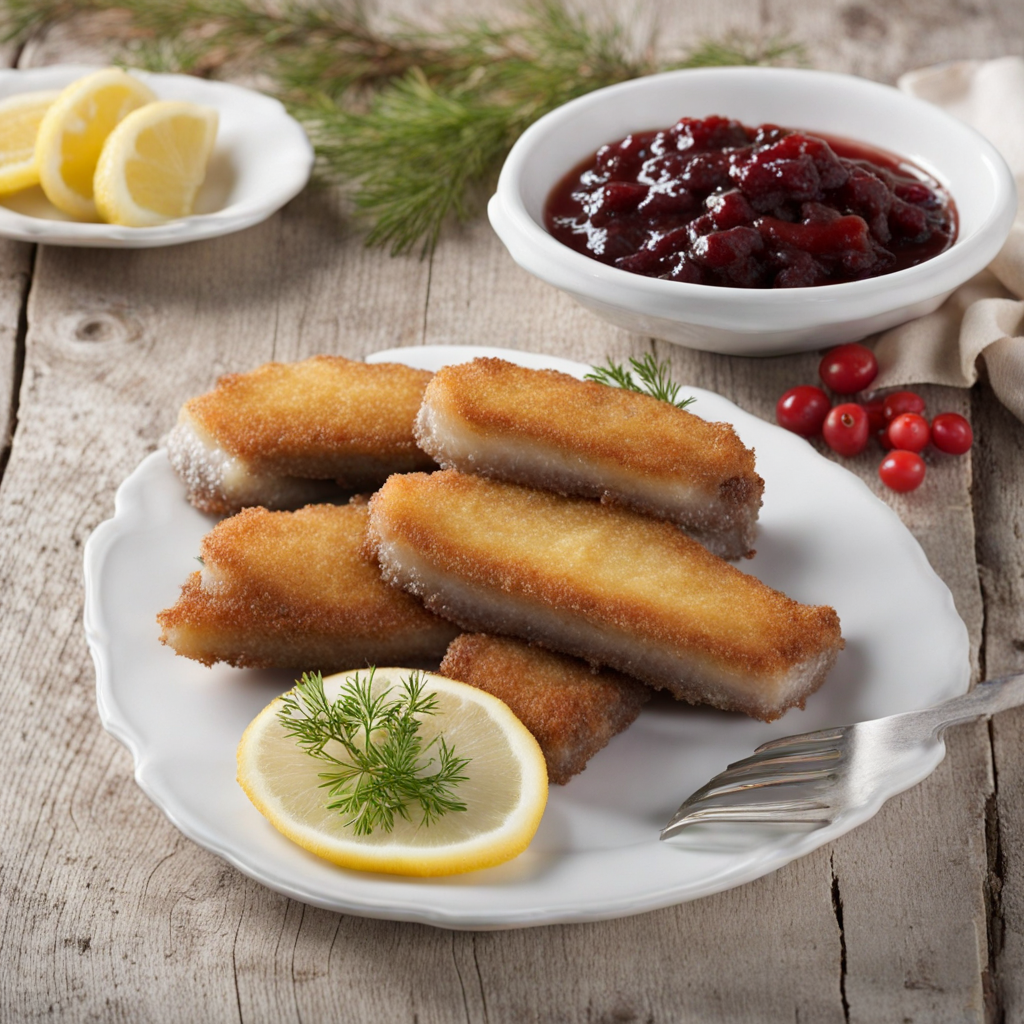Swedish Black Soup
Swedish Black Soup, known as "Svartsoppa," is a traditional dish that embodies the rich culinary heritage of Sweden. This intriguing soup is often made with a base of stock derived from game, particularly from birds such as goose or duck. The deep, dark color of the soup comes from the addition of blood, typically from these birds, which lends a unique flavor profile that is both savory and slightly sweet. The use of spices like allspice and black pepper enhances the overall taste, creating a complex and aromatic experience that is both comforting and exotic. The texture of Swedish Black Soup is smooth and velvety, inviting you to savor each spoonful. Traditionally, it is garnished with a variety of accompaniments, such as finely chopped vegetables, diced apples, or even prunes, which contribute contrasting flavors and add a touch of sweetness to the dish. These toppings not only provide visual appeal but also enhance the depth of flavors, making each bite a delightful exploration of taste. Served hot, this soup is often enjoyed during festive occasions, especially during the autumn and winter months when hearty meals are cherished. For those adventurous enough to try Swedish Black Soup, the experience is one that transcends mere sustenance; it is a journey into the heart of Swedish cuisine. The combination of rich, gamey flavors with the sweetness of fruits and spices offers a taste that is both unique and memorable. Whether enjoyed as a main course or as part of a larger meal, this dish invites food lovers to embrace its boldness and discover the warmth of Scandinavian culinary traditions.
How It Became This Dish
Svartsoppa: A Culinary Journey Through Swedish History Svartsoppa, a traditional Swedish dish often translated as “black soup,” is a fascinating culinary artifact that encapsulates centuries of Swedish culture, tradition, and seasonal practices. This dish, characterized by its deep, dark color, is not just a meal; it is a marker of Swedish heritage, particularly in the regions of Uppland and Gästrikland. To understand svartsoppa is to delve into a narrative that intertwines food, history, and social customs. #### Origins of Svartsoppa The origins of svartsoppa can be traced back to the medieval period in Sweden. It is believed that the dish emerged around the 14th century, a time when the consumption of game and wild fowl was a common practice among the nobility and the rural populace. The soup's primary ingredient is typically made from the blood of birds, most famously geese or ducks, which reflects the hunting traditions prevalent in Sweden at the time. Hunting not only provided sustenance but was also a social activity that reinforced community bonds. The practice of blood-based dishes has roots in various cultures worldwide, often signifying a connection to the land and the cycles of nature. In Sweden, svartsoppa was particularly associated with the autumn hunting season, a time when families would gather to celebrate the bounty of the land and prepare for the long winter months ahead. #### Cultural Significance Svartsoppa holds a special place in Swedish culinary traditions, especially during the autumn and winter months. It is commonly associated with the celebration of “Mårten Gås” (Martinmas), a festival held in November that honors Saint Martin. This celebration, which includes a feast featuring roasted goose, has roots in medieval Christian traditions and was historically linked to the end of the harvest season. The feast would often culminate in the preparation of svartsoppa, showcasing the use of every part of the animal, a practice that reflects the ethos of sustainability and resourcefulness in Swedish culture. The soup itself is rich in flavor, typically spiced with ingredients such as allspice, ginger, and black pepper, and is thickened with breadcrumbs or flour. The addition of vinegar or sour cream provides a necessary acidity, balancing the rich, savory notes of the dish. Traditionally, svartsoppa is served with accompaniments like prunes, apples, or other fruits, which add a sweet contrast to the savory profile of the soup. In modern Sweden, svartsoppa has transcended its origins as a dish of the elite and has become a beloved part of the national culinary repertoire. It is often served at festive occasions and gatherings, reinforcing its role in bringing people together around the table. Its preparation is often seen as a communal activity, where families and friends come together to honor tradition while enjoying one another’s company. #### Development Over Time As time passed, svartsoppa adapted to the changing socio-economic landscape of Sweden. The Industrial Revolution in the 19th century brought significant changes to food production and consumption patterns. Urbanization led to a decline in hunting practices, and as people moved into cities, traditional dishes like svartsoppa began to fade from daily life. However, this decline also sparked a movement to preserve cultural heritage, leading to a resurgence in interest in traditional foods. In the late 20th and early 21st centuries, Sweden experienced a renaissance in traditional cuisine, fueled by a growing interest in local and sustainable food practices. Chefs and home cooks alike began to explore and revive traditional recipes, including svartsoppa. The dish became a symbol of regional pride, particularly in Uppland, where it is still celebrated during Mårten Gås festivities. Modern interpretations of svartsoppa have emerged, with chefs experimenting with ingredients and techniques while staying true to the dish's roots. Some contemporary versions may use alternative proteins or incorporate modern cooking methods, such as sous-vide, showcasing the versatility of this historic recipe. Despite these innovations, the essence of svartsoppa remains— a hearty, richly flavored soup that honors the traditions of its past. #### Svartsoppa Today Today, svartsoppa is enjoyed by those who seek to connect with Sweden's culinary heritage. It is often featured in restaurants that specialize in traditional Swedish cuisine and is a staple in many households during the festive season. The dish serves as a reminder of the importance of community, tradition, and the connection between food and cultural identity. Moreover, svartsoppa has garnered attention beyond Sweden’s borders. It is increasingly recognized as an example of Nordic cuisine's unique flavors and practices, contributing to the global appreciation for traditional foodways. Food festivals and international culinary events have introduced svartsoppa to new audiences, allowing it to cross cultural boundaries while retaining its historical significance. #### Conclusion Svartsoppa is more than just a dish; it is a narrative woven into the fabric of Swedish culture. From its medieval roots as a dish for the noble class to its modern status as a beloved traditional meal, svartsoppa embodies the evolution of Swedish culinary practices and the enduring importance of food in forging community and identity. As Sweden continues to explore and celebrate its rich culinary heritage, svartsoppa stands as a delicious symbol of the past, present, and future, reminding us of the power of food to connect us to our history and to one another.
You may like
Discover local flavors from Sweden


